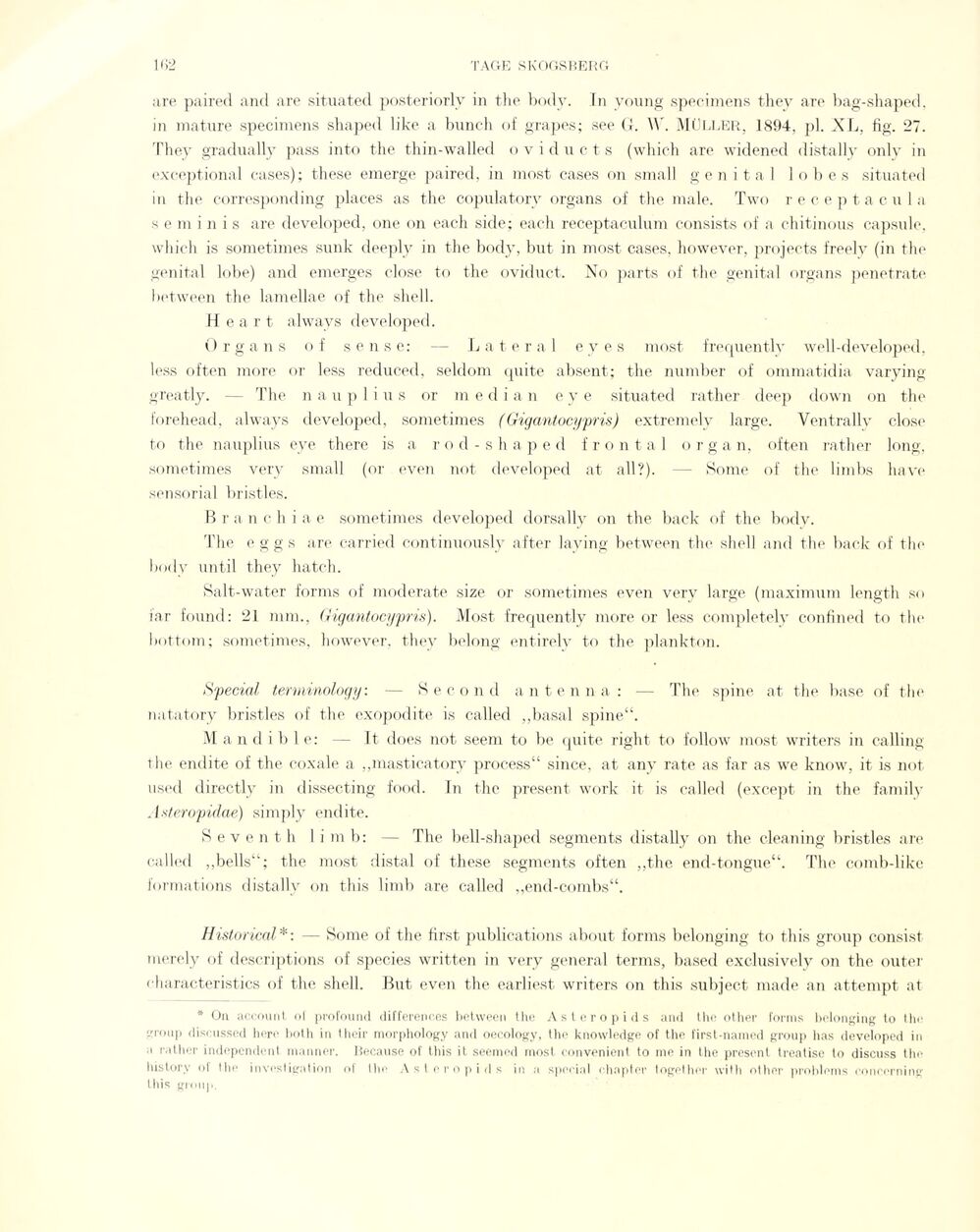
Full resolution (JPEG) - On this page / på denna sida - Sidor ...

<< prev. page << föreg. sida << >> nästa sida >> next page >>
Below is the raw OCR text
from the above scanned image.
Do you see an error? Proofread the page now!
Här nedan syns maskintolkade texten från faksimilbilden ovan.
Ser du något fel? Korrekturläs sidan nu!
This page has never been proofread. / Denna sida har aldrig korrekturlästs.
:ire paired and are situated posteriorly in the body. In young specimens thev are bag-shaped.
in mature specimens shaped like a bunch of grapes; see G. W. Müller, 1894, pl. XL, fig. 27.
They gradually pass into the thin-walled oviducts (which are widened distally only in
exceptional cases); these emerge paired, in most cases on small genital lobes situated
in the correspond ing places as the copula tory organs of the male. Two receptacula
s eminis are developed, one on each side; each receptaculum consists of a chitinous capsule,
which is sometimes sunk deeply in the body, but in most cases, however, projects freely (in the
genital lobe) and emerges close to the oviduct. No parts of the genital organs penetrate
between the lamellae of the shell.
Heart always developed.
Organs of sense: — Lateral eye s most frequently well-developed,
less often more or less reduced, seldom quite absent; the number of ommatidia varying
greatly. — The nauplius or m e d i a n ey e situated rather deep down on the
forehead, always developed, sometimes ( Gigantocypris) extremely large. Ventrallv close
to the nauplius eye there is a rod-shaped frontal organ, often rather long,
sometimes very small (or even not developed at all?). — Some of the limbs have
sensorial bristles.
Branchi a e sometimes developed dorsally on the back of the body.
The e g g s are carried oontinuously after laying between the shell and the back of the
body until they hatch.
Balt-water forms of moderate size or sometimes even very large (maximum length so
far found: 21 mm., Gigantocypris). Most frequently more or less completely confined to the
bottom; sometimes, however. they belong entirely to the plankton.
Spedal tenninology: — Second antenna: — The spine at the base of the
natatory bristles of the exopodite is called „basal spine“.
Mandible: — It does not seem to be quite right to follow most writers in calling
the endite of the coxale a „masticatory process“ since, at any rate as far as we know, it is not
used directly in dissecting food. In the present work it is called (except in the family
Asteropidae) simply endite.
S e v e n t h 1 i m b: — The bell-,shaped segments distally on the cleaning bristles are
called „bells“; the most distal of these segments often „the end-tongue“. The comb-like
formations distally on this limb are called „end-combs“.
Historical*: — Borne of the first publications about forms belonging to this group consist
merely of descriptions of species written in very general terms, based exclusively on the outer
eharacteristics of the shell. But even the earliest writers on this subject made an attempt at
* On account of profound differences between the Asteropids and the other forms belonging to the
group diseussed here both in their morphology and oeeology, the knowledge of the first-named group has developed in
a rather independent manner. Because of this it seemed most convenient to me in the present treatise to discuss the
history of the investigation of the Asteropids in a special ehapter togethor with other problems concerning
this group.
<< prev. page << föreg. sida << >> nästa sida >> next page >>